Table of Contents
Introduction
In today’s modern world, bidets are becoming increasingly popular as a hygienic alternative to traditional toilet paper. With their ability to provide a thorough clean after using the restroom, bidets offer a host of benefits for personal hygiene. However, it’s essential to understand the proper cleaning techniques to maintain a clean and sanitary bidet.
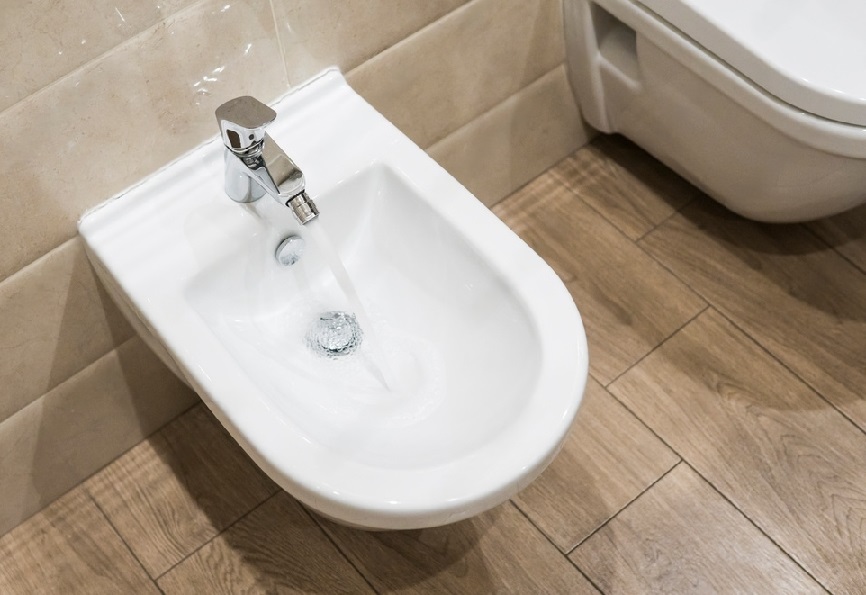
Understanding Bidets
Defining Bidets
A bidet is a bathroom fixture designed to clean the genital and anal areas after using the toilet. It’s like a small sink positioned near the toilet, equipped with a nozzle or spray mechanism that delivers water for cleansing. Bidets come in various types, including standalone units, integrated bidet toilet seats, and handheld bidet sprayers.
Types of Bidets
- Standalone Units: These are separate fixtures positioned next to the toilet. They typically feature a basin for sitting and washing, along with controls for adjusting water temperature and pressure.
- Integrated Bidet Toilet Seats: These are toilet seats with built-in bidet functionality. They replace the existing toilet seat and often include features like heated seats, air dryers, and remote controls for added convenience.
- Handheld Bidet Sprayers: Also known as bidet hoses or shattafs, handheld bidet sprayers are portable devices that attach to the toilet’s water supply. They feature a nozzle connected to a hose, allowing users to manually control the direction and intensity of the water spray.
Components of a Handheld Bidet
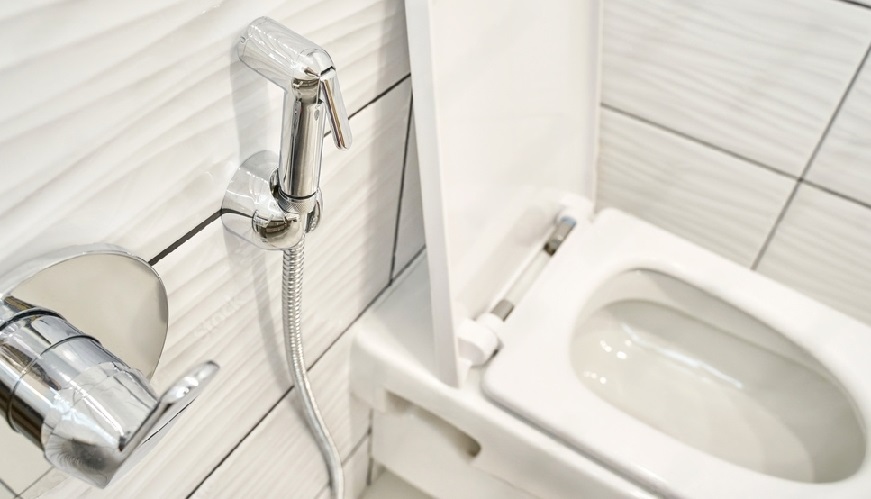
Nozzle
At the heart of the handheld bidet is the nozzle, the component responsible for delivering the water spray. Typically made of durable materials like stainless steel or ABS plastic, the nozzle features small perforations that emit the water in a gentle yet effective stream. Some nozzles may include adjustable settings to control the spray pattern and pressure, allowing users to customize their cleansing experience.
Hose
Connected to the nozzle is the hose, a flexible tubing that transports water from the water supply to the nozzle. Hoses are usually made of materials such as stainless steel or reinforced PVC to ensure durability and longevity. The length of the hose can vary depending on the specific model, but it typically ranges from a few feet to several feet, providing ample reach for users to maneuver the bidet comfortably.
Sprayer Handle
The sprayer handle, also known as the wand or gun, is the part of the bidet that users hold and operate during cleansing. It is ergonomically designed for comfortable grip and control, allowing users to aim the water spray precisely where needed. The handle may feature buttons or levers to regulate water flow and pressure, giving users flexibility in adjusting the cleansing experience to their preference.
Trigger or Control Mechanism
Many handheld bidets are equipped with a trigger or control mechanism that allows users to activate the water flow with ease. This may take the form of a simple trigger that users squeeze to release the water, or it may involve a more sophisticated control panel with buttons or levers for adjusting water pressure and temperature. The trigger or control mechanism puts the power of cleansing in the hands of the user, providing a convenient and intuitive experience.
Mounting Hardware
To install the handheld bidet, mounting hardware is required to secure the nozzle and hose to the toilet or nearby wall. This typically includes components such as brackets, screws, and anchors, as well as a T-adapter to connect the bidet to the toilet’s water supply. Mounting hardware may vary depending on the specific model and installation requirements, but it is essential for ensuring the bidet remains securely in place during use.
Components of a Seat Bidet

Seat and Lid
The seat and lid of a bidet seat serve the same basic function as those of a traditional toilet. However, bidet seats often feature additional ergonomic design elements for enhanced comfort, such as contoured seating surfaces and soft-closing lids to prevent slamming.
Nozzle
At the heart of the bidet seat is the nozzle, which delivers a gentle stream of water for cleansing. The nozzle is typically positioned under the seat and can be extended or retracted as needed. Many bidet seats feature adjustable nozzles that allow users to customize the angle, position, and spray pattern for optimal cleansing.
Control Panel
A control panel is usually located on the side of the bidet seat or attached to a remote control for easy access. The control panel allows users to adjust various settings, such as water temperature, water pressure, nozzle position, and cleansing mode. Some bidet seats also feature presets for different users or preferences, making it simple to personalize the cleansing experience.
Air Dryer
Many bidet seats are equipped with an integrated air dryer that gently blows warm air to dry the washed area after cleansing. The air dryer eliminates the need for toilet paper, promoting a more hygienic and environmentally friendly bathroom experience. Users can adjust the temperature and intensity of the air dryer to their preference for added comfort.
Heated Seat
A heated seat is a popular feature found in many bidet seats, especially in regions with colder climates. The heated seat provides warmth and comfort during use, making the bathroom experience more pleasant, especially during cold winter months. Users can adjust the seat temperature to their liking for personalized comfort.
Deodorizer
Some bidet seats are equipped with a built-in deodorizer that helps neutralize odors in the bathroom. The deodorizer uses activated carbon or other odor-absorbing materials to remove unpleasant smells, leaving the air feeling fresh and clean. This feature adds an extra level of comfort and convenience to the bidet seat experience.
Energy-Saving Features
To conserve energy and reduce electricity costs, many bidet seats are equipped with energy-saving features such as automatic power-off timers and eco-friendly modes. These features help minimize energy consumption when the bidet seat is not in use, promoting sustainability and environmental responsibility.
Components of a Faucet Bidet
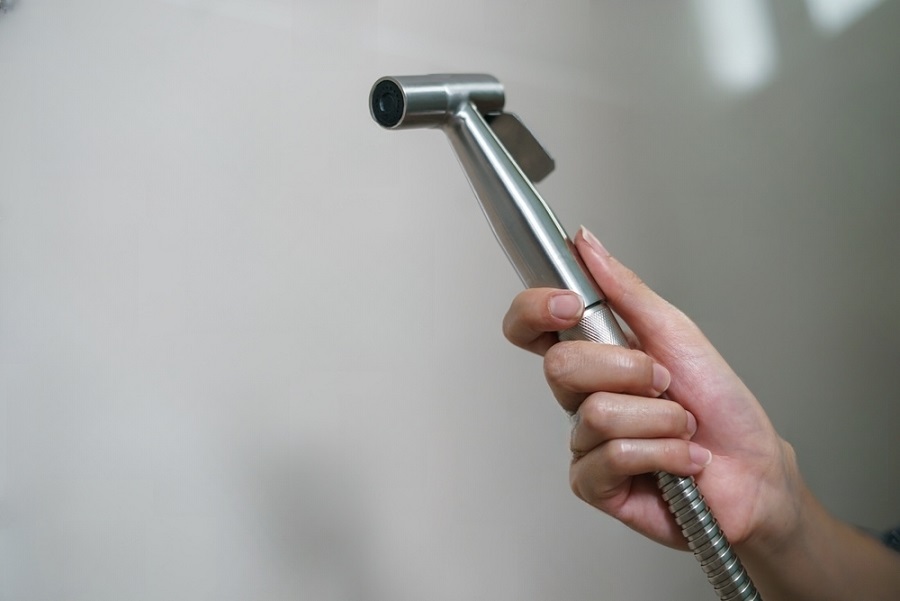
Faucet Attachment
The main component of a faucet bidet is the faucet attachment, which connects to the existing sink or faucet in the bathroom. This attachment typically consists of a diverter valve, a hose, and a nozzle or spray head. The diverter valve allows users to switch between regular faucet use and bidet functionality by diverting water flow to the bidet attachment when needed.
Nozzle or Spray Head
The nozzle or spray head is the part of the faucet bidet that delivers the water spray for cleansing. It is usually located at the end of the hose and can be adjusted to control the direction and intensity of the water spray. Some faucet bidets feature adjustable nozzles with multiple spray patterns to suit individual preferences.
Hose
Connected to the nozzle or spray head is the hose, a flexible tubing that transports water from the faucet to the bidet attachment. The hose is typically made of durable materials like stainless steel or reinforced PVC to ensure longevity and reliability. It may vary in length depending on the specific model and installation requirements.
Diverter Valve
The diverter valve is a crucial component of the faucet bidet attachment, allowing users to switch between regular faucet use and bidet functionality. When the bidet function is activated, the diverter valve redirects water flow from the faucet to the bidet attachment, enabling users to cleanse themselves with water. Some faucet bidets feature manual diverter valves that users must operate manually, while others may have automatic diverter valves that activate with the push of a button.
Control Lever or Knob
Many faucet bidets are equipped with a control lever or knob that allows users to adjust water temperature and pressure for optimal comfort and cleansing. The control lever or knob may be located directly on the bidet attachment or integrated into the existing faucet design. Users can adjust the water temperature and pressure to their preference, ensuring a personalized cleansing experience.
Components of a Travel Bidet
Water Reservoir
The water reservoir is a fundamental component of a travel bidet, storing the water used for cleansing. It typically has a capacity of a few hundred milliliters to provide multiple uses before needing to be refilled. The reservoir may have a screw-on cap or a flip-top lid for easy filling and sealing to prevent leaks during transport.
Nozzle
At the tip of the travel bidet is the nozzle, which delivers a gentle stream of water for cleansing. The nozzle may be retractable or foldable to conserve space when not in use. It is designed to provide precise and targeted cleansing, ensuring effective hygiene with minimal water usage.
Spray Mechanism
The spray mechanism is responsible for delivering the water from the reservoir to the nozzle. Depending on the specific model, the spray mechanism may be manual or battery-operated. Manual spray mechanisms typically require users to squeeze or press a button to generate water pressure, while battery-operated mechanisms provide automatic spraying at the push of a button.
Control Button or Trigger
Many travel bidets feature a control button or trigger that allows users to activate the spray mechanism with ease. This button or trigger may be located on the body of the bidet or integrated into the handle for convenient access. Users can press the button or trigger to initiate the water spray and adjust the pressure as needed for optimal cleansing.
Ergonomic Design
A travel bidet is designed with portability and ease of use in mind. It often features an ergonomic design with a comfortable grip and intuitive controls for effortless operation. The compact size and lightweight construction make it easy to carry in a bag or luggage, ensuring that you can maintain hygiene wherever you go.
Cleaning Attachment
Some travel bidets come with a cleaning attachment, such as a brush or sponge, for easy maintenance and hygiene. This attachment allows users to clean the nozzle and other components of the bidet effectively, ensuring that it remains sanitary between uses.
Overall, bidets offer a hygienic and environmentally friendly alternative to traditional toilet paper, promoting better personal hygiene and comfort in the bathroom. Understanding the different types and components of bidets can help users choose the right option for their needs and maintain it properly for long-term use.
To better understand how to clean a bidet, it’s essential to know its components. The primary parts of a bidet include the nozzle, water temperature control, air dryer, and in some cases, additional features such as a deodorizer or heated seat. Each component plays a crucial role in providing a comfortable and effective cleaning experience.
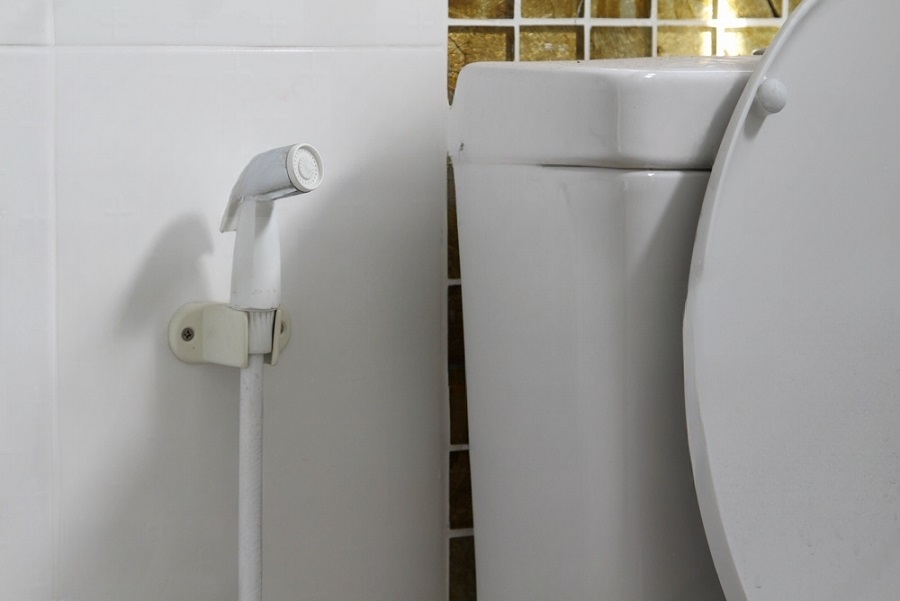
Health and Hygiene Considerations
The Importance of Proper Cleaning
Ensuring Hygiene and Safety
Proper cleaning of bidets is crucial for maintaining hygiene and safety in the bathroom. Bidets are designed to cleanse the genital and anal areas after using the toilet, which means they come into direct contact with bodily fluids. Without regular cleaning, bidets can become breeding grounds for harmful bacteria and other pathogens, putting users at risk of infections and other health issues.
Preventing Bacterial Growth
One of the primary reasons for cleaning bidets regularly is to prevent the buildup of bacteria. Moisture and warmth create an ideal environment for bacteria to thrive, and bidets provide both conditions. Without proper cleaning, bacteria can multiply rapidly on the surfaces of the bidet, increasing the risk of contamination with each use. This can lead to infections, skin irritation, and other health problems for users.
Reducing the Spread of Infections
Proper cleaning techniques not only remove existing bacteria but also help prevent the spread of infections. When users come into contact with a dirty bidet, they can inadvertently transfer bacteria to their hands, clothing, and other surfaces in the bathroom. From there, bacteria can spread to other individuals, leading to a cycle of infection. By keeping bidets clean, users can reduce the risk of spreading infections to themselves and others.
Promoting Personal Comfort
In addition to hygiene and safety concerns, proper cleaning of bidets also promotes personal comfort. A clean bidet provides a more pleasant and enjoyable experience for users, enhancing their overall bathroom experience. On the other hand, a dirty or unclean bidet can cause discomfort, unpleasant odors, and feelings of unease. By maintaining cleanliness, users can ensure that their bidets remain a comfortable and hygienic option for personal hygiene.
Extending the Lifespan of the Bidet
Regular cleaning and maintenance can also help extend the lifespan of the bidet. Over time, dirt, grime, and mineral deposits can accumulate on the surfaces of the bidet, causing it to function less efficiently and potentially leading to mechanical issues. By cleaning the bidet regularly and following manufacturer guidelines for maintenance, users can prolong its lifespan and ensure that it continues to operate effectively for years to come.
Benefits of Cleanliness
On the flip side, ensuring that your bidet is clean and well-maintained offers several benefits. A clean bidet reduces the risk of contamination and infection, providing peace of mind knowing that you’re using a hygienic bathroom fixture. Additionally, regular cleaning can prolong the lifespan of your bidet and ensure that it functions correctly for years to come.

Step-by-Step Cleaning Guide
Pre-cleaning Preparations
Before diving into the cleaning process, it’s essential to make some preparations. Gather your cleaning supplies, including mild soap, water, disinfectant wipes or sprays, and soft cloths or sponges. Ensure that the bidet is turned off and unplugged if applicable to avoid any accidents during the cleaning process.
Cleaning the Exterior Surfaces
Start by cleaning the exterior surfaces of the bidet. Use a mild soap and water solution to wipe down the seat, basin, and any other accessible parts of the bidet. Avoid using abrasive cleaners or harsh chemicals, as they can damage the finish of the bidet and potentially cause irritation to sensitive skin.
Cleaning the Bidet Nozzle
Next, focus on cleaning the bidet nozzle, which is responsible for spraying water during use. Refer to the manufacturer’s instructions for specific cleaning guidelines, as different bidet models may require different cleaning methods. In general, use a soft cloth or sponge soaked in mild soap and water to gently wipe the nozzle, ensuring that any residue or buildup is removed.
Sanitizing the Bidet Seat
Once the exterior surfaces and nozzle are clean, it’s time to sanitize the bidet seat. Use disinfectant wipes or sprays to thoroughly clean the seat, paying extra attention to areas that come into direct contact with skin. Allow the disinfectant to sit for a few minutes before wiping it off with a clean, damp cloth.
Regular Maintenance Tips
Finally, establish a regular cleaning routine to keep your bidet in optimal condition. Depending on usage frequency, aim to clean the bidet at least once a week, if not more often. Monitor the bidet for any signs of wear or malfunction, such as leaks or irregular water flow, and address them promptly to prevent further damage.
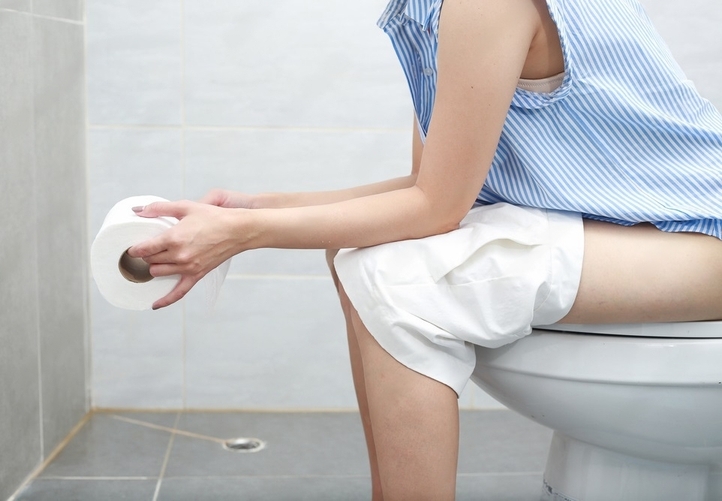
Troubleshooting and Common Issues
Identifying Common Problems
While bidets offer numerous benefits for personal hygiene, they are not immune to occasional problems. Identifying common issues with bidets is essential for addressing them promptly and ensuring a consistent and comfortable experience for users. Here are some common problems that users may encounter with bidets:
Low Water Pressure
One of the most common issues with bidets is low water pressure. This can result in a weak or inadequate spray, making it difficult to achieve thorough cleansing. Low water pressure may be caused by various factors, such as a clogged nozzle, a partially closed water supply valve, or mineral deposits blocking the water flow. Identifying the underlying cause of low water pressure is essential for resolving the issue effectively.
Clogged Nozzle
Another common problem with bidets is a clogged nozzle. Over time, debris, mineral deposits, and other impurities can accumulate in the nozzle, obstructing the flow of water and affecting the quality of the spray. A clogged nozzle may result in uneven or inconsistent cleansing, as well as potential hygiene issues. Regular cleaning and maintenance can help prevent nozzle clogs and ensure optimal performance.
Malfunctioning Controls
Some bidets may experience issues with malfunctioning controls, such as temperature settings, water pressure adjustments, and spray patterns. This can result in difficulty controlling the bidet’s functions and may lead to discomfort or dissatisfaction for users. Malfunctioning controls may be caused by electrical problems, mechanical failures, or user error. Troubleshooting the controls and consulting the manufacturer’s instructions can help identify and resolve the issue.
Leaking or Dripping
Leaking or dripping is another common problem that users may encounter with bidets. This can occur due to loose connections, worn-out seals, or damaged components. Leaks or drips can result in water wastage, damage to surrounding fixtures, and potential safety hazards. It’s essential to address leaks or drips promptly to prevent further damage and ensure the bidet’s proper functioning.
Unpleasant Odors
Unpleasant odors emanating from the bidet can be a source of discomfort and embarrassment for users. This problem may be caused by bacterial growth, stagnant water, or inadequate cleaning practices. Proper cleaning and maintenance, including regular sanitization of the bidet surfaces and nozzle, can help eliminate odors and maintain a fresh and hygienic environment.
Electrical Issues
Bidets equipped with electronic features, such as heated seats, air dryers, and remote controls, may experience electrical problems from time to time. This can include issues such as power surges, faulty wiring, or malfunctioning components. Electrical issues should be addressed promptly to ensure user safety and prevent damage to the bidet’s electrical system.
Solutions to Common Issues
Fortunately, many common bidet problems have relatively simple solutions. For example, if you notice a decrease in water pressure, check for any obstructions in the nozzle or water supply line. Clogged nozzles can often be cleared using a small brush or pipe cleaner. If you’re experiencing issues with temperature control or other functions, refer to the manufacturer’s instructions for troubleshooting tips.
Conclusion
In conclusion, proper cleaning techniques are essential for maintaining a clean and hygienic bidet. By understanding the components of a bidet and following a step-by-step cleaning guide, you can ensure that your bidet remains in optimal condition for years to come. Regular maintenance and troubleshooting can help address any common issues that may arise, allowing you to enjoy the benefits of a clean bidet and improved personal hygiene. Remember, cleanliness is key to a healthy and comfortable bathroom experience.
